Better Your Bed (and Body) With Bolsters and Neck Rolls
http://decor-ideas.org 06/28/2014 19:13 Decor Ideas
The rule of thumb is that the quantity of accent pillows on a bed shouldn’t exceed the midpoint of the bed’s length. Whereas many hail from “the more, the merrier” school of thought, many others see half a bed of pillows as excessive. But varying the types of accent pillows on the bed to include bolster or neck roll pillows can keep pillow mania under control while still keeping you on cloud nine.
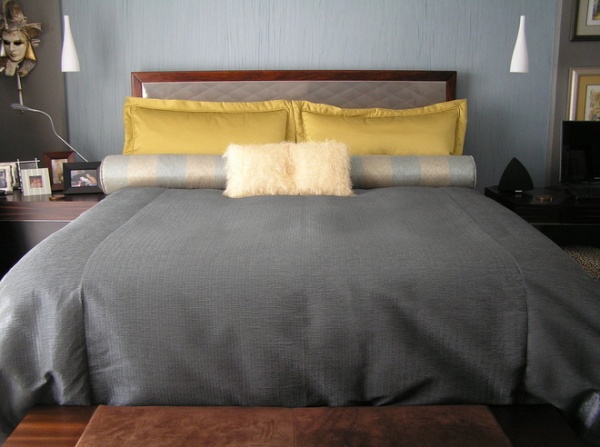
The terms “Bolster” and “neck roll” are often used interchangeably, but there is a difference. Bolster pillows are longer, being the same width or slightly smaller than the width of the bed. Neck roll pillows tend to be much shorter. Either way, because of their tubular shape, they’re especially good candidates for showing off bold stripes and contrasting welting.
The word “bolster” first appeared in the 12th century and evolved from the word “belg” (“bag”). It also means “to support,” so the pillow seems aptly named. In Western culture the bolster pillow is typically used for lower-back support while someone is sitting against the headboard — great for reading or watching TV. Using a bolster may eliminate the need for some of the mountains of square and rectangular pillows we often use to sit up in bed. Not only for beds, bolsters are also used on sofas as well. In Asian countries bolster pillows are traditionally hugged during sleep.
Following are some ways to work with bolsters and neck roll pillows.
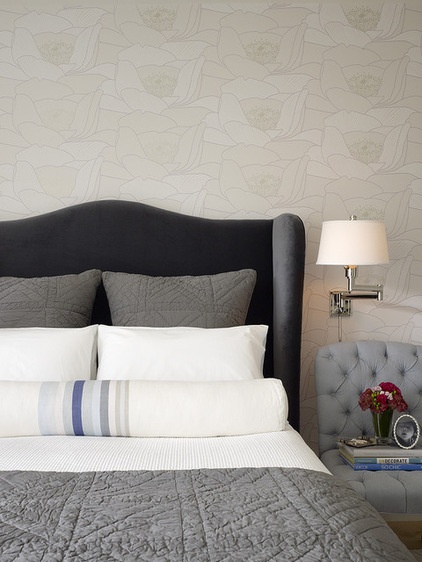
Full-Length Bolsters
Bolster pillows are found in varying lengths, but one of the most popular is full length, equal to the width of the bed (or slightly less). So, a full-length bolster pillow on a king-size bed could be nearly 76 inches long.
Bolsters are most often placed in front of larger pillows to keep them contained. Here a striped bolster holds back two cascading sets of pillows.
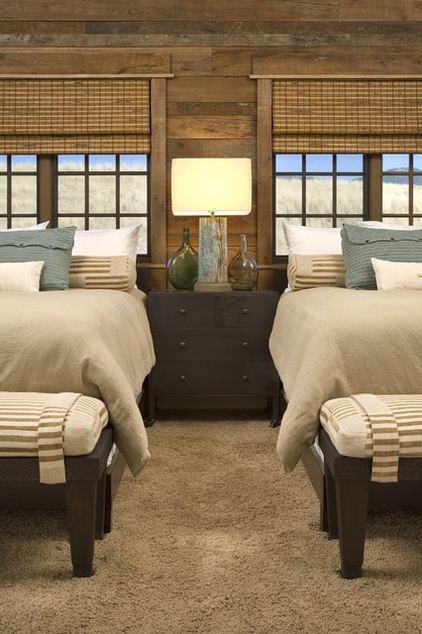
Sandwiching full-length bolster pillows between larger pillows in the back and smaller throw pillows in front is a popular alternative. This scenario works especially well if the bolsters are neutral or textured, since much of their surface is hidden by the decorative pillows in front.
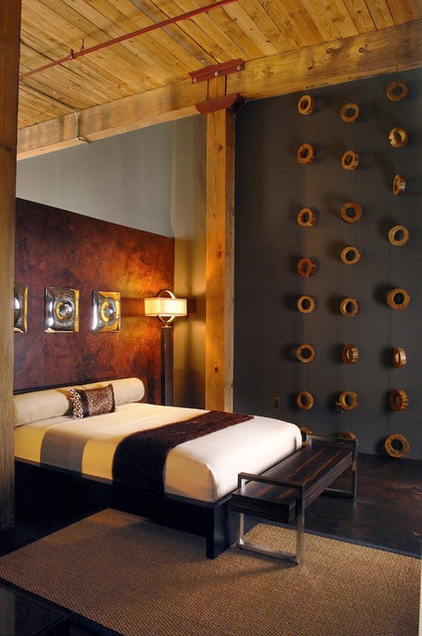
Some designers go the spare route with beds sporting a bolster pillow in lieu of traditional-size bed pillows, like in this bed design by MaRae Simone Interiors.
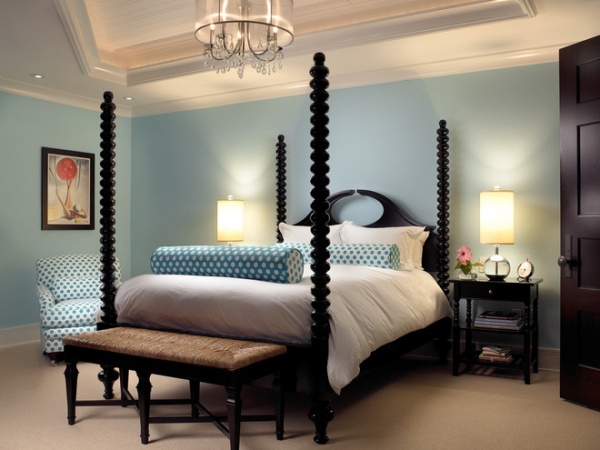
Utilizing a bolster pillow at the foot of the bed allows you to put your feet up and fully relax. This bedroom design by Pinto Designs and Associates has a bolster pillow at both the head and foot of the bed. Each is upholstered in contrasting fabrics on the face and sides for a whimsical element.

A bolster only at the foot of the bed allows for more variety of pillow shapes at the head, if desired, or a more streamlined look.

Medium-Length Bolsters
If the full-length bolster is too long for your taste, consider a medium-length one. Designer Sara Ingrassia says she likes to use 4-foot lengths on king-size beds, 3-foot ones for queen size and 2-foot lengths for twin beds.
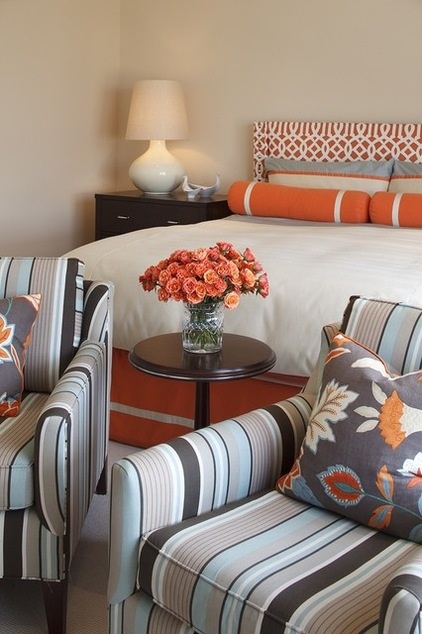
Twin Bolsters
Placing two shorter bolsters pillows on a full-, queen- or king-size bed makes perfect sense if two people share the bed. In addition to being more flexible, two bolster pillows side by side also provide an opportunity to introduce more visual interest, as with the striking white stripe outlining each of these tangerine bolsters.
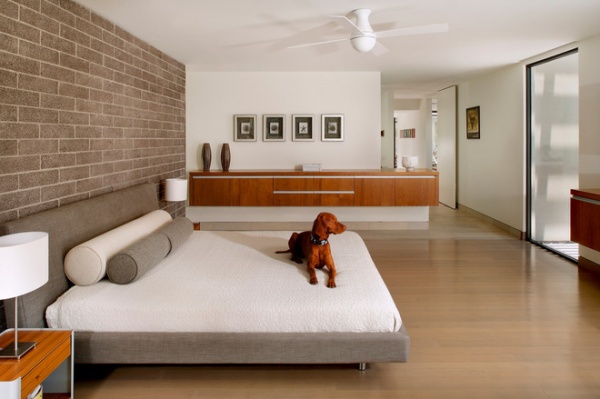
This pair, set against a full-length counterpart, offers the best of both worlds.
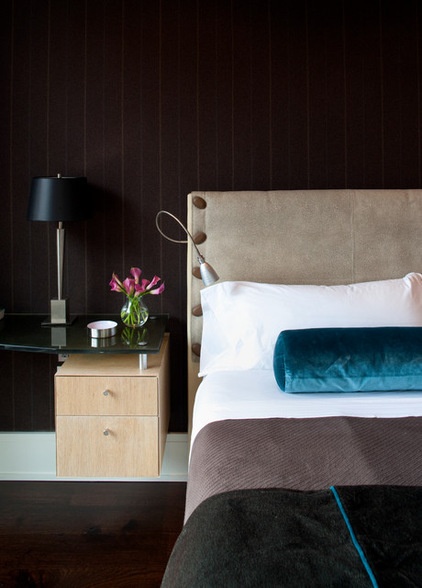
Consider diameter too. Some bolster pillows are overscaled and echo rolled bales of hay, while others are too skimpy. Ingrassia says she usually specifies a 9-inch finished diameter for pillows on king- and queen-size beds. For twin beds, she says, you can go a little smaller. She does caution, “Make sure that you make the cover for pillows this large 1 inch smaller by diameter and length, which makes the pillows look full but not overstuffed.” If the insert and pillow sizes are equal, the pillow will not appear full, and a flaccid, too-big pillow cover looks terrible.
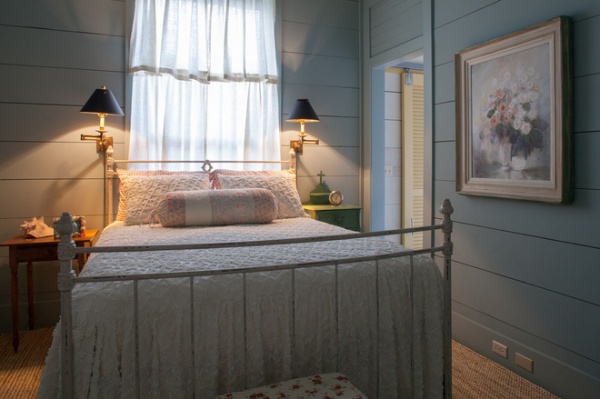
Neck Roll Pillows
Neck roll pillows are the shorter cousins in the bolster pillow family. Neck rolls generally run between 14 and 20 inches in length and are around 6 inches in diameter. True to the name, neck roll pillows are used for neck support, but they can also have a purely decorative role. Neck roll pillows may or may not have an opening, such as a zippered one or one at the end, such as this charming tied example.
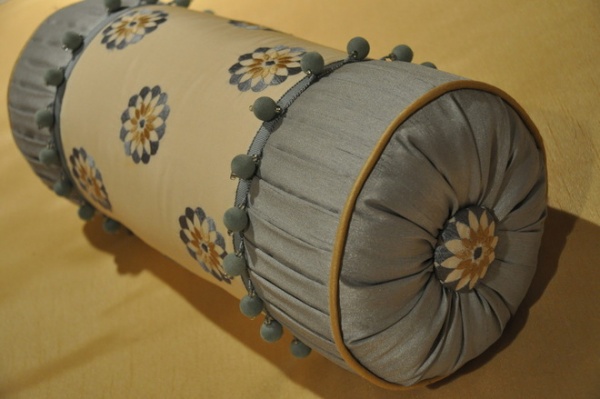
Because neck rolls are smaller and tend to be ornamental, they’re often brightly colored, patterned or elaborately trimmed, like this gathered example.
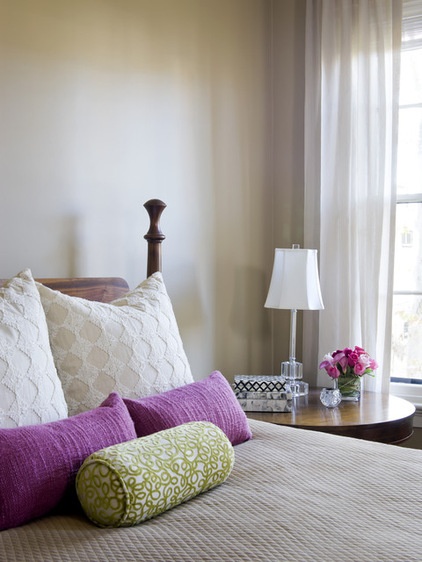
Let’s not forget perhaps the most important part of both bolster and neck roll pillows: the pillow insert itself. Since these pillows function as body support, the inserts need to be quite firm. Full-length bolster pillows especially need ample stability so they won’t “break” in the middle.
Down and feather inserts are usually preferred. The higher percentage of down makes the pillow smoother (and more expensive); feathers do have quills that can poke over time.
Ingrassia notes that an insert of 10 percent down and 90 percent feathers always looks better than foam or spun polyester, but keep in mind any allergies to down. A down alternative, like polyester fiberfill, is a good hypoallergenic choice. If you want natural but more luxurious inserts, choose a higher percentage of down, such as 30, 50 or 100 percent.
More: How to Choose the Perfect Bed Pillow — and Sleep Better
Related Articles Recommended












